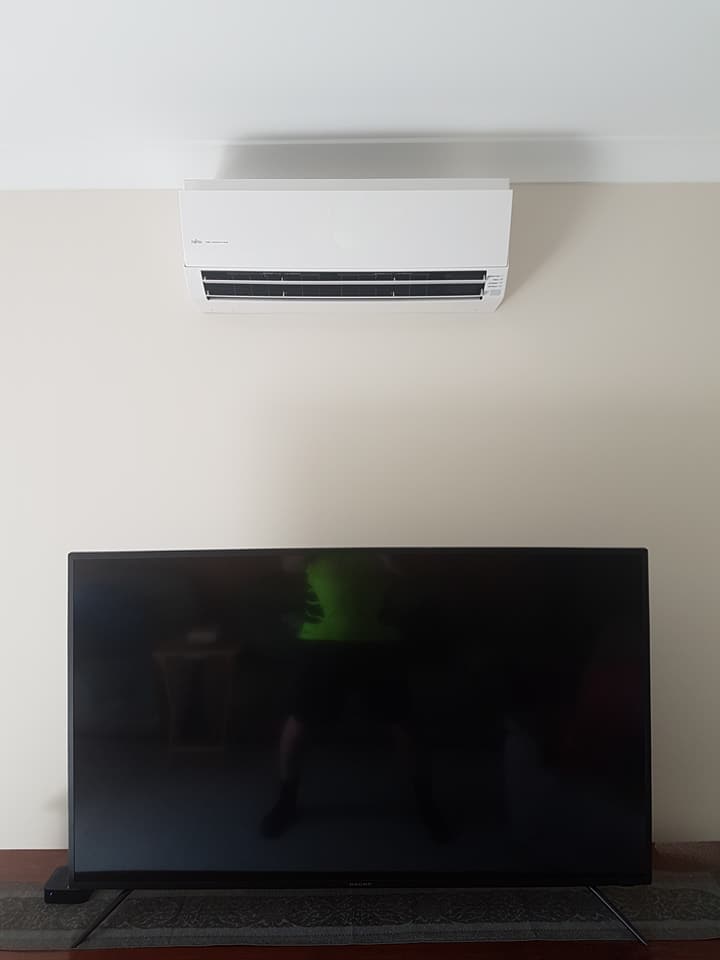
Air conditioners can be essential in peak summer periods, making your home or office a cool sanctuary against the sweltering heat. This air conditioner buyers guide should give you the facts you need to choose the right unit for you.
1. How much Capacity (kW) do you need?
When buying air conditioners, your first consideration is likely to be how powerful the device needs to be to adequately cool your home. Air conditioner capacity is rated by BTU (British Thermal Unit) and Capacity (kW) output in kilowatts. Buying the right size unit is very important as air conditioners that are too big will use more energy, while under-sized ones will not cool the room sufficiently.
When selecting the right size air conditioner for your space, the below applies:
- For a room 10m2 to 20m2, a 2.6kW unit should cool the room;
- For a room 20m2 to 30m2, a 3.5kW unit should cool the room;
- For a room 30m2 to 45m2, a 5-6kW unit should cool the room; and
- For a room 45m2 to 65m2, a 7-8kW unit should cool the room.
2. Types of Air Conditioners
Split System
These air conditioners are made up of two parts, with one attached to the internal wall, while the other sits on the outside to exhaust heat out. These are low cost to install and with separate units for each room they provide flexibility.
What size split system do I need? That depends on whether it’s for a bedroom or lounge room, and how big the room is you’re trying to cool. Use the information above to calculate how many watts you need your split system to be to cool the room effectively.
Not sure where to position a split system? The internal part of the split system should be positioned away from any heat-generating appliances such as ovens, up on the wall so cool air is distributed around the room, never above electrical fittings for safety reasons, and somewhere that suits the style of the room. Position the external part in the shade (if possible), away from dust and falling tree leaves, and in a spot that won’t be too noisy for you or the neighbours.
Reverse Cycle Split System (Heating & Cooling)
A reverse cycle split system can be used as an air conditioner in summer and a heater in winter for year-round home comfort. When it comes to thinking about a reverse cycle split system vs ducted heating, putting in a reverse system that cools and heats is easier and cheaper than getting a ducted heating system, as a ducted system has to be tailored to suit your unique home and ducts need to be installed in your floors, walls or ceilings.
Inverter System
Air conditioners with inverters are able to vary the temperature of the air they produce, rather than stopping and starting. They are often quieter, cheaper to run and achieve the desired room temperature more quickly – although they are more expensive.
Multi System
Multi-split air conditioners connect multiple indoor units to a single outdoor condenser. They require less ductwork, but a single control station operates the whole system, meaning individual room temperatures are not possible.
Ceiling Cassettes
Under Ceiling Cassettes
Floor Mounted
3. Energy Efficiency
Air conditioners are rated on their energy efficiency using a ten-star scale, with more stars meaning the unit is better for the environment. For units with cooling and heating functions, separate ratings are given for each. Inverter air conditioners are more energy efficient due to their ability to regulate temperature without starting or stopping. To find out more about how you can cool your home in the most energy efficient way and save on bills, read the Quick Tips for Choosing an Energy Efficient Air Conditioner.
4. Cleaning & Maintenance
Cleaning and maintaining your air conditioner is extremely important. An air conditioner that is neglected won’t perform properly and will use more energy, which can in turn increase your power bills; especially since space cooling accounts for 6 per cent of the average household’s energy usage.
Not cleaning and maintaining your air conditioner can cause a multitude of problems, such as filters and ducts becoming clogged with dirt, which limits airflow and reduces the air conditioner’s ability to cool your home (and heat it if you have a reverse cycle split system).
Ensure your air conditioner works properly and efficiently by cleaning and maintaining the:
- Filters – Filters capture airborne particles so these can get extremely dirty. Regularly cleaning or changing filters (as often as every month or two in summer) is the quickest way to save energy on home cooling, helping you use 5-15% less energy and reduce your bills. Homes with pets or lots of exposure to dust will need to replace their filters more often.
- Coils – Dirt inevitably collects in the evaporator coils and condenser coils over time. Dirt in the evaporator coil reduces air flow and the ability to evaporate heat, so check the evaporator coil every year and clean it when it needs it. Dirt can also collect on condenser coil fins, especially if it’s in an outdoor area that’s dusty or leafy. Keep the area around the condenser coil clear of tree foliage, grass cuttings and other debris so there’s enough airflow around the condenser.
- Fins – The evaporator coils and condenser coils both have fins which can bend, blocking air flow. Buy a “fin comb” and use this special air conditioner tool to straighten the fins out again and ensure maximum air flow.
- Drains – Air conditioners have condensate drains that can clog, which stops the air conditioner from being able to reduce the humidity and can cause excess air moisture to affect your carpets and walls. To prevent clogs, feed a stiff wire through the drain channels every now and then.
- Seals – At the start of every summer, check the seal that sits between the air conditioner and the window to ensure it’s still a tight seal, and that moisture damage isn’t causing cool air to escape outside.
Having your air conditioner thoroughly cleaned every year by a professional is recommended to:
- Reduce your energy bills by up to 30%
- Increase airflow and efficiency
- Remove mould and odours
- Kill and remove harmful bacteria
5. Choose Marksmen, a professional installer
Installing an air conditioner is very technical and involves many processes. In Australia, you will need to hire a licensed professional to install and service your new air conditioning system , and they can help you work out where to position your air conditioner. These air conditioner installation experts have had relevant training and are licensed to handle refrigerants. Air conditioner installers must have one of two licenses issued by the Australian Refrigeration Council – either a Full Refrigeration and Air conditioning (RAC) License or a restricted ‘splits’ license. Air conditioners often include manufacturer’s warranties, so to ensure you’re covered under the warranty if something goes wrong, professional installation is a mandatory.



